Leyland cypress trees, with their vibrant green foliage and rapid growth, are popular landscaping choices. However, if you've noticed your Leyland cypresses turning brown, promptly addressing the issue is essential. In this article, we'll explore why Leyland cypresses may turn brown and provide insights into effective treatments to restore their vitality.
Why Are My Leyland Cypresses Turning Brown?
Leyland cypresses are generally hardy trees, but several factors can contribute to their browning.
Understanding these factors is crucial for implementing the proper treatment.
1. Temperature Changes Harming Cypress Trees
Leyland cypresses are sensitive to extreme temperature fluctuations. Sudden temperature drops or extended periods of extreme cold can cause their foliage to turn brown. This is often a temporary condition, and as the weather warms, new growth should emerge. To prevent this, consider planting Leyland cypresses in locations with some wind protection, as wind can exacerbate temperature-related stress.
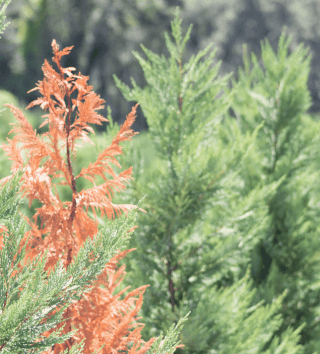
2. Moisture Stress in Leylands
Moisture stress is a common reason for Leyland cypresses to turn brown. This can result from both overwatering and underwatering. Inadequate drainage can lead to root rot, while drought conditions can cause water stress. To address moisture stress, ensure proper irrigation practices. Water deeply but infrequently, allowing the soil to dry slightly between watering.
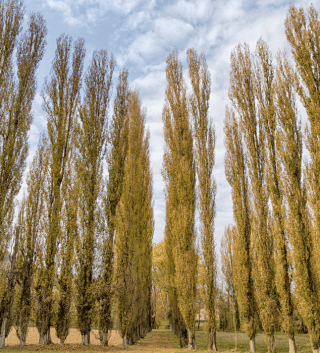
3. Canker Disease on Leylands
Canker diseases are fungal infections affecting Leyland cypresses, leading to browning and dieback. The disease typically manifests as sunken, discolored tree bark areas. To treat canker disease, prune away infected branches and provide proper care to improve the tree's overall health. Fungicidal treatments may also be necessary in severe cases.
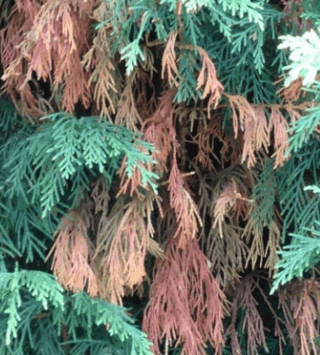
4. Bagworm Infestation
Bagworms are destructive pests that feed on Leyland cypress needles. If left unchecked, they can cause significant browning and defoliation. To treat a bagworm infestation, remove the bags (which house the larvae) from the tree and apply insecticides as needed. Regular monitoring is crucial to prevent future infestations.
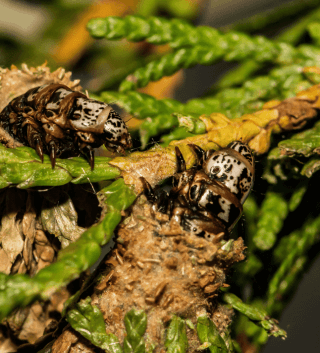
5. Blight Disease on Cypresses
Cypress canker, or Seiridium canker, is a common fungal disease that affects Leyland cypresses. It often presents as reddish-brown needles and can quickly spread throughout the tree. Pruning away infected branches and improving air circulation can help manage the disease. Applying fungicides in early spring as a preventive measure is also recommended.
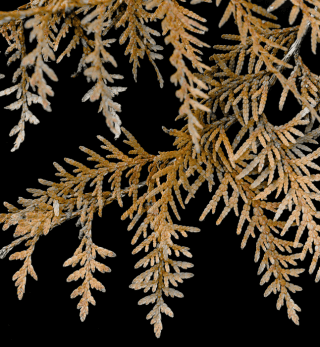
6. Transplanting a Leyland
If you've recently transplanted a Leyland cypress, browning can occur as the tree adjusts to its new location. This is typically a temporary condition, and the tree should recover with proper care and attention. Ensure it receives adequate water, mulch the base to retain moisture, and avoid disturbing the root system.
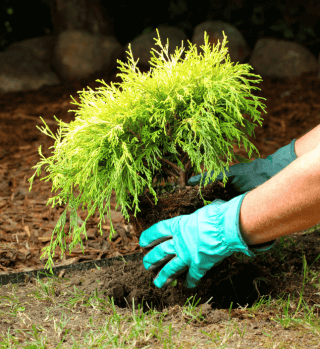
Treatment for Leyland Cypress Trees Turning Brown
Addressing Leyland cypresses turning brown requires a combination of preventive measures and targeted treatments.
1. Pruning and Trimming: Regularly inspect your Leyland cypresses for dead or diseased branches and promptly prune them away. Pruning improves air circulation and reduces the risk of disease spread.
2. Proper Irrigation: Maintain a consistent watering schedule, ensuring the soil remains evenly moist but not waterlogged. Mulching around the base of the tree can help retain moisture.
3. Disease Management: If your cypresses are affected by canker disease or blight, consider applying appropriate fungicides according to the manufacturer's instructions. Consult a certified arborist for a professional assessment and treatment plan.
4. Pest Control: To prevent and manage bagworm infestations, physically remove the bags and consider using insecticides as a preventive measure.
Benefits of Hiring a Certified Arborist
While you can implement some treatments on your own, consulting a certified arborist offers several advantages:
- Expertise: Arborists are trained professionals with in-depth knowledge of tree species, diseases, and pests. They can accurately diagnose issues and recommend the most effective treatments.
- Customized Solutions: Arborists provide tailored solutions based on the specific needs of your Leyland cypresses, ensuring the best chance of recovery.
- Preventive Care: Arborists offer preventive care plans to maintain the health and vitality of your trees, reducing the risk of future problems.
Strobert Tree Services: Leaders in Tree Care
When it comes to your Leyland cypresses' health and care, trust the Strobert Tree Services experts. With a team of certified arborists and a commitment to tree care excellence, we serve Delaware, Pennsylvania, Maryland, and New Jersey. Contact us today for professional tree care, diagnosis, and treatment to ensure your Leyland cypresses thrive for years.











